AR-15 Ejection Pattern – Does it Matter as Much as the Internet Would Have You Believe?
Not a day goes by that I find a post in a Facebook group or an online forum, talking about how someone changed parts up because their ejection pattern was off. Even people I consider close friends are guilty of it.
Statements like, “Oh, my gun is over gassed because my brass ejects at 1-2 o’clock, so I have to change out parts.,” or “Man, my brass is ejecting at like 5 o’clock, I need to run a lighter buffer.” While brass ejection CAN indicate something is wrong, it isn’t the end-all-be-all metric of determining an issue that people make it out to be. There are simply too many variables that can contribute to the ejection pattern for it to be a reason to trade out parts.
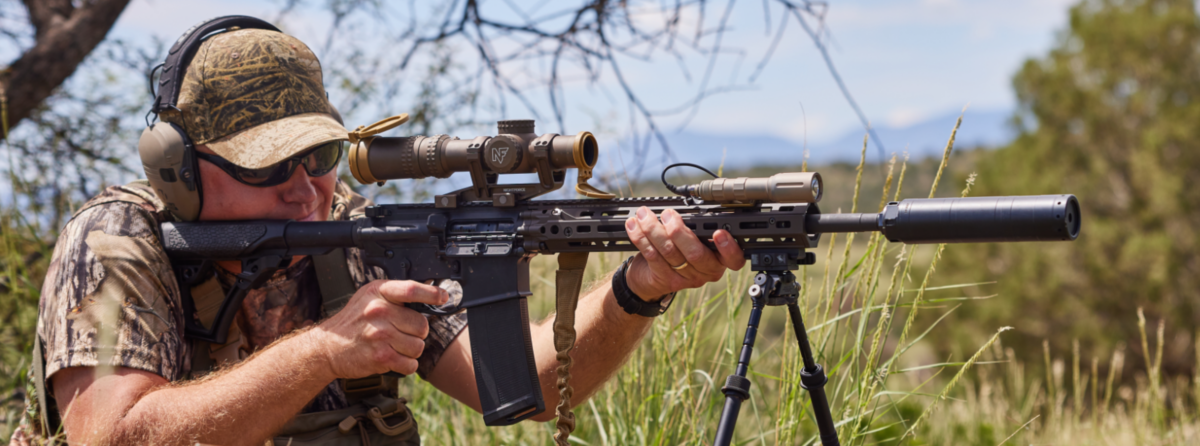
AR-15 Ejection Pattern – Does Your Gun Run?
Let’s start with the most obvious question: Does your gun run? When I ask if your gun runs, I mean when you pull the trigger, is the cycle of operation completed without interruption, and the gun is ready to fire again?
If the answer is yes, why do you need to trade out parts? Barring a small quality-of-life upgrade (which is a valid reason if it doesn’t alter the answer to “Does Your Gun Run?”), there is no need to change anything. If the answer is no, what step of the cycle is it failing at? Are you seeing failure to fire? Are you seeing a failure to extract? Is it failing to eject?
Go down each step of the list and note where the failure is occurring and diagnose from there. Often cleaning a gun and/or swapping to a different magazine will correct issues unless there truly is a broken part involved.
Why then, do people see where their brass is ejecting and think something is wrong? Somewhere along the way, people saw a correlation between AR-15 ejection pattern and the failures they were experiencing. One example would be that their gun was short stroking and their brass was ejecting close to 6 o’clock. This then became watered down to mean that if your brass is ejecting at 6 o’clock, something MUST be wrong with your gun and you need to fix it.
The key here is that it went from an actual failure (with associated ejection), to just an ejection being the reason that things were tweaked. Skipping critical information usually doesn’t end well, so I’m going to detail reasons why your AR-15 ejection pattern might be different than you expect.
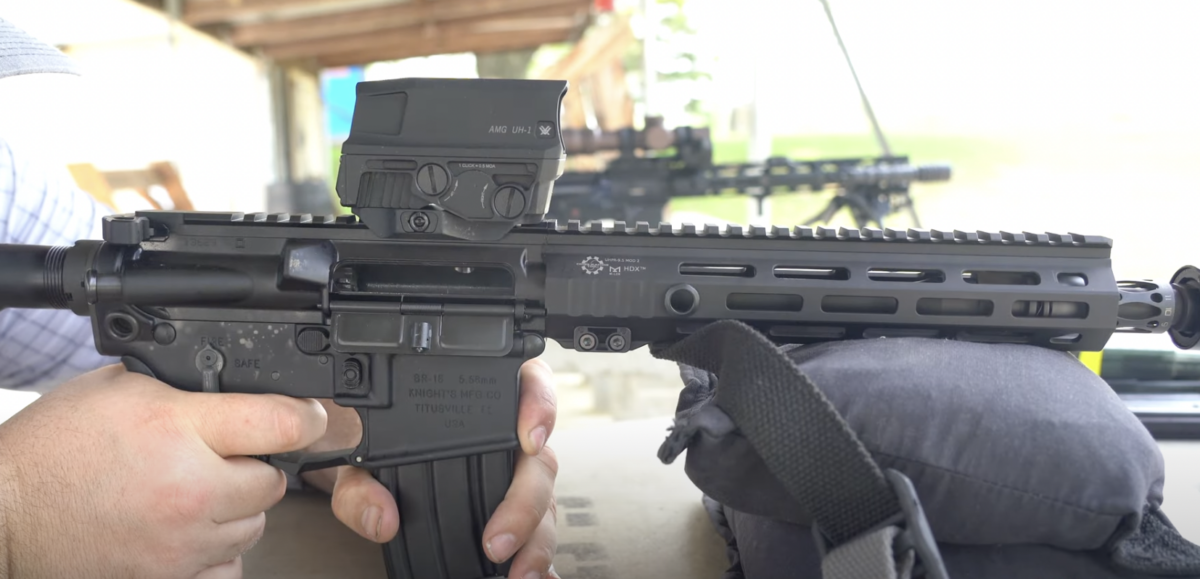
AR-15 Ejection Pattern – What Impacts How Your AR Ejects?
Your bolt is made up of several parts that influence how your gun ejects brass. The first thing that comes to mind is the actual ejector and the ejector spring in your bolt. If you have put a brand new spring in, your ejection pattern is going to be very different than if that spring has gone through thousands (or even tens of thousands) of compression cycles.
A new spring is going to be stiffer than one that is broken in, which will eject the casing much more vigorously. Conversely, I’ve had an ejector break in two, but the pieces line up and the ejection was very mushy until it was replaced. Next is your extractor and the spring it has. If your extractor is new and has a sharp edge or “claw” it is going to latch onto the rim of your brass with more force, causing it to eject harder than if the ejector is worn. If your extractor is dull or lacks the two “teeth” it should have on the outer edges of the claw, your AR-15 ejection pattern is going to be at different angles.
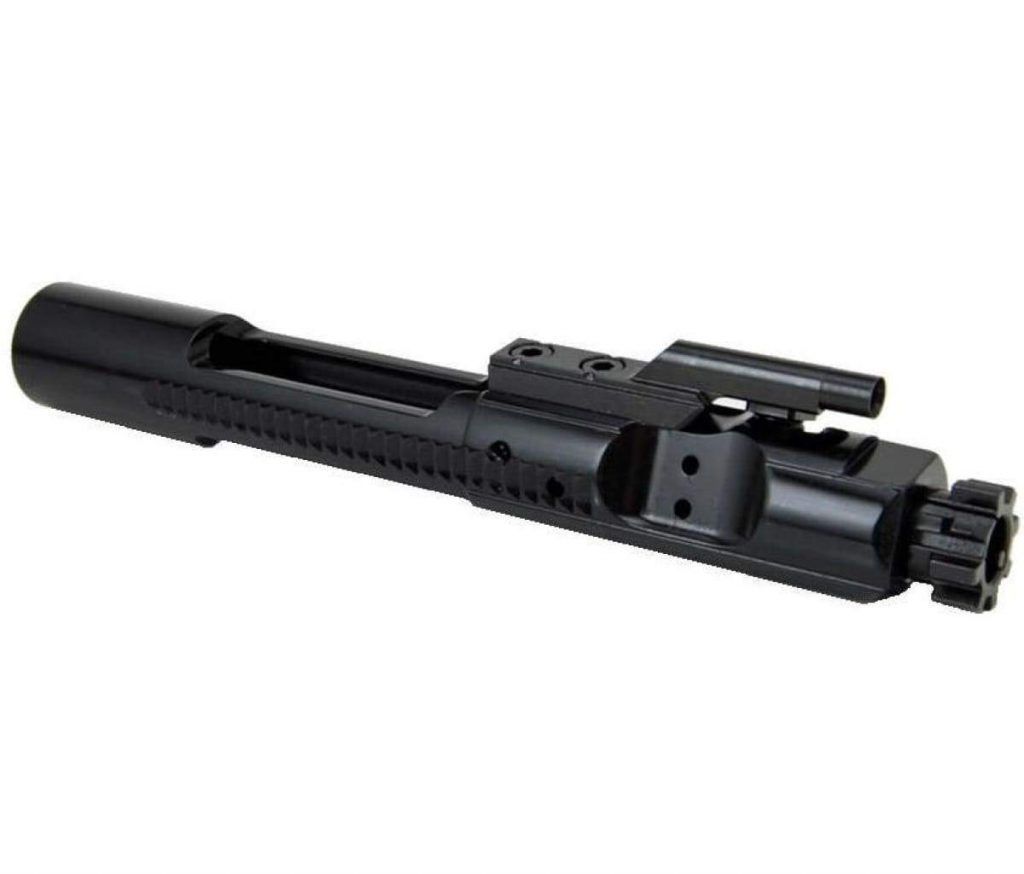
Your bolt can impact your AR-15 ejection pattern , but how about your bolt carrier? The type of bolt carrier you use will absolutely change your ejection pattern. Full auto carriers are heavier and will generally cause the ejection to occur in front of the shooter in the 1-3 o’clock range. Low mass carriers will do the opposite, usually causing ejection to occur somewhere in the 4-6 o’clock range as they are lighter. I say usually and generally, as they are only one factor, and the impact of the bolt components can still influence the ejection, even with one type of carrier or another.
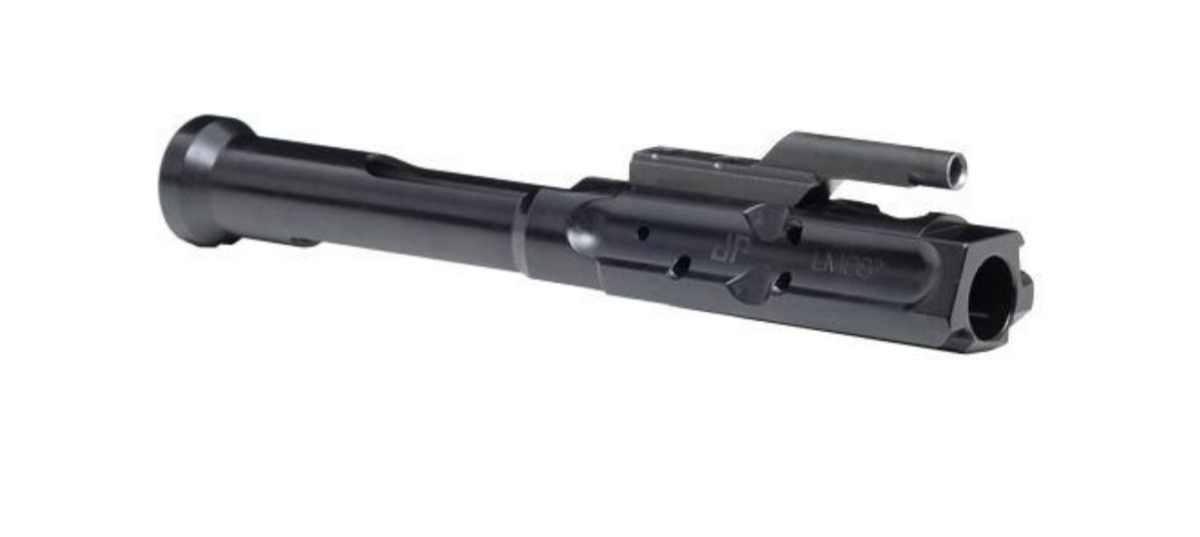
Additionally, low-mass bolt carrier groups are usually only run-in competition guns that are specifically tuned to certain loads and are there to shave ounces off of a race gun. In these cases, specific buffer setups are also run with them, sometimes also run with adjustable gas blocks. In tuned guns, the overall gun is adjusted to achieve the desired result and only operates within a VERY narrow window of parameters.
Buffer setups can change things. If your gun is running a buffer that is lighter than optimal, you could be ejecting towards the rear. Unless the gun is short-stroking though, it will run. Could it run better? Maybe, but it will run. If you are using a buffer that is heavier than you need, the AR-15 ejection pattern is going to be towards the front, but again, is the gun running? Unless you experience the bolt traveling faster than the next round can seat to be picked up, is it an issue?
This is where I’ll get on my soapbox and say that if your goal is to have a fighting gun, the metric is that the gun works every time you pull the trigger. If you are going to change things up, that is your first and most important goal. If you attempt to move from an H2 to an A5 system, but doing so causes your gun to be less reliable, you failed your primary goal in an attempt to chase after something else.
To further complicate things, your buffer spring will have an even bigger impact on brass ejection than your buffer weight. If you were to take a new, standard carbine spring and shoot the gun, it will eject one way. After a few thousand cycling compressions, that same spring is going to give a different ejection pattern due to wear. You then factor in after-market springs and the water gets even muddier. Sprinco springs will give a different impact on ejection than carbine springs (and the impact will be directly tied to which strength version of the spring you run). A Tubbs flat wire spring will give a different ejection pattern than either of the other two. A Geissele Super 42 spring will be different still. Tensile strength and the braiding pattern of the spring has a direct effect on the way the brass ejects without changing anything else.
Your ammunition can impact the ejection of your brass. Just like guns have multiple factors that influence things, ammunition also has multiple variables. To start, the thickness of the case head will play into how well your extractor claw can grasp it while pulling the round out of the bore (then the thickness will further be a factor if the extractor is dulled). If the person that made the ammo wasn’t paying attention and over or undercharged the powder, it is going to behave differently coming out than if it were a “correct” load. If the ammo are reloads, the number of times it has been resized and reloaded can also change the AR-15 ejection pattern, as the brass has been stretched time and time again. The type of powder can play a role, as people experiment with different powders not ideal for that type of round, and so on. By now you should understand how there is a large number of variable combinations between the gun and ammo that can influence how things eject.
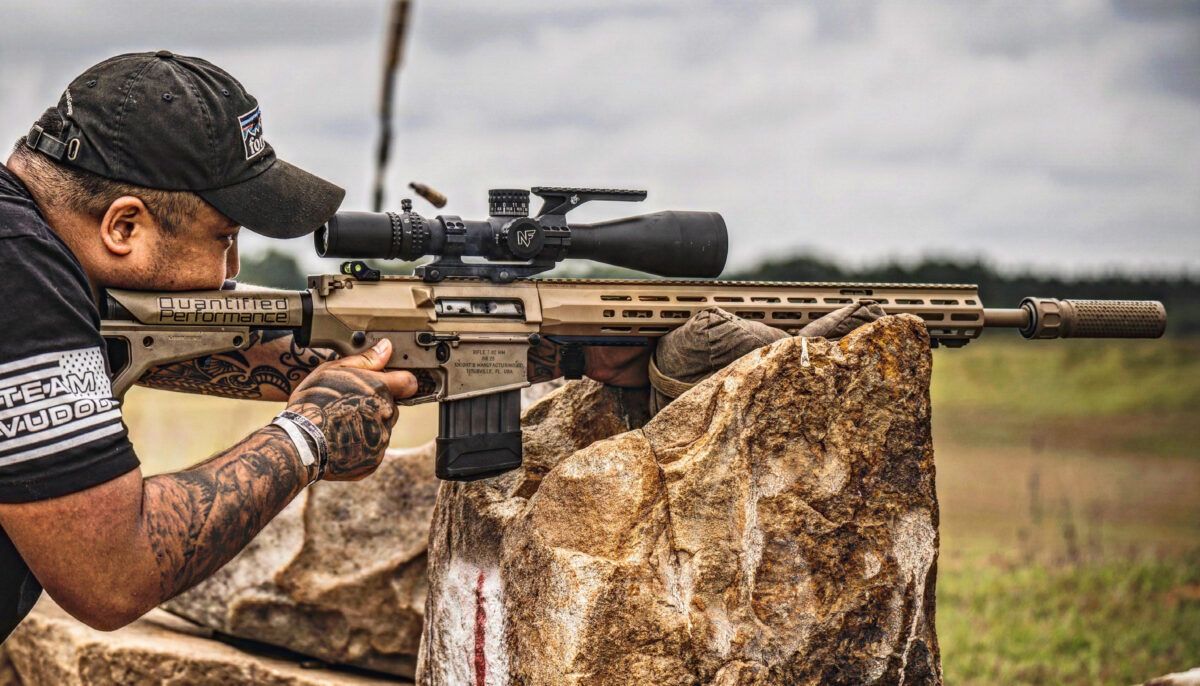
Barrel wear will also play a part in AR-15 ejection pattern, specifically gas port erosion. As you shoot, hot gasses are vented through the port, up into the gas block, and back through the gas tube to move your bolt carrier group. These hot gasses do take a toll on the gas port, and over time will cause it to open up more and more. As it increases in diameter, your gun will get gassier and gassier, causing more aggressive brass ejection. This can also start as a problem (if your barrel has a larger gas port than usual) and become an even worse problem down the line.
Finally, we have the addition of a suppressor. A suppressor will add varying degrees of back pressure to your gun, which will directly influence the ejection pattern of your brass. Cans with more back pressure, like the Surefire line, will lead to a more aggressive ejection pattern; cans like Huxwrx Flow, and other flow-through or low back pressure cans, won’t have as pronounced effect, but will still influence the ejection some.
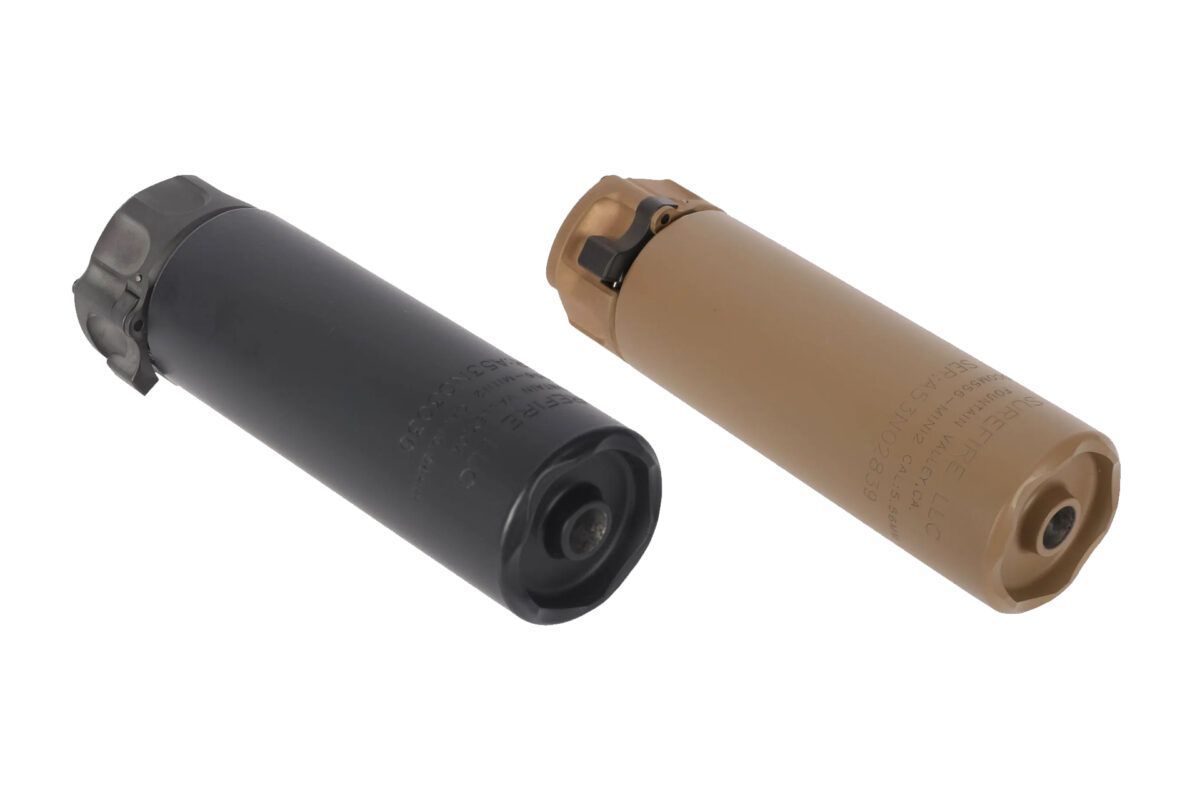
SureFire SOCOM 2 Series MINI 5.56 Sound Suppressor
A can will also enhance the changes any of the aforementioned variables will have on your AR-15 ejection pattern, while at the same time potentially masking being under-gassed (as the back pressure will make up for some of the lack of gas in the direct impingement system). Add it all together, and what do we have? Way too many things that can alter the ejection of brass for it to be the primary cause of concern for changing out parts in your gun.
If you’ve ever read any of the articles I’ve written, you should know what I’m about to say: Please do not take my word on this, test it yourself. Shoot your gun suppressed vs unsuppressed with no other changes to see how the brass ejection changes. Replace an ejector with a sharp double-fang claw and see how that impacts things for yourself. With all of that said, I want to make one thing clear. There are times when swapping parts will be necessary, but NEVER at the expense of reliability.
Chasing perfection is something we can all be guilty of, and pushing the envelope is the only way to find our hard limits. Having a gun that doesn’t function when you need it is never the acceptable outcome though. Quit buying into internet nonsense when things like this are easy to uncover for yourself. Do some testing and figure out if you truly need to change things up, or if your gun will perform its role as it is, and you are simply chasing after some of the issues I’ve detailed.
###
Read the full article here

